Kingdom Animalia Family Boettgerillidae Higher classification Boettgerilla | Genus Boettgerilla Rank Species | |
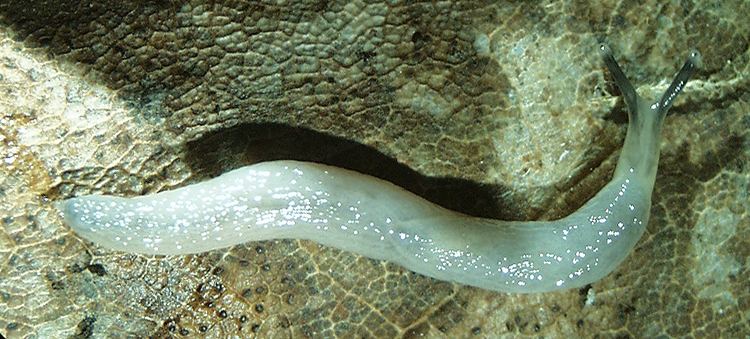 | ||
Similar Boettgerilla, Boettgerillidae, Gastropods, Molluscs, Deroceras panormitanum | ||
Boettgerilla pallens, common name the worm slug, is a European species of air-breathing land slug, a terrestrial pulmonate gastropod mollusk in the family Boettgerillidae.
Contents

Distribution
The type locality of Boettgerilla pallens is Gudauta in Abkhazia.
The native distribution of Boettgerilla pallens is believed to be the SW flank of the Caucasus:
Maybe it is also native to the Crimean Mountains and Donetsk Upland in Ukraine
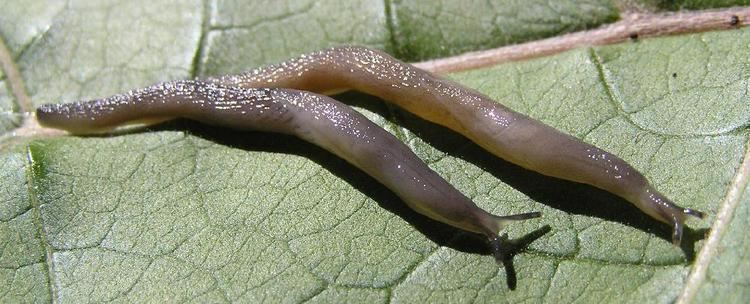
But the species has spread spectacularly over the last half century. Dates of first recorded occurrences in various countries are listed in.
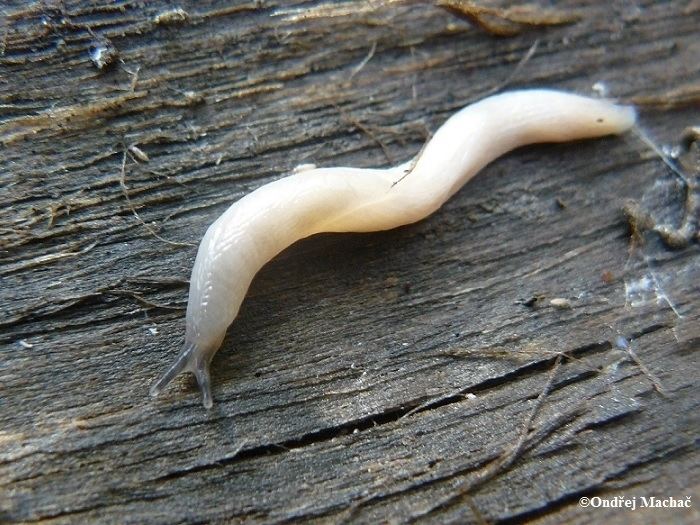
In Europe, Boettgerilla pallens was first found in 1949 (in Germany). It has now been become naturalized in most of Europe although it has conspicuously not been reported from most southern European countries. Countries where it occurs include:
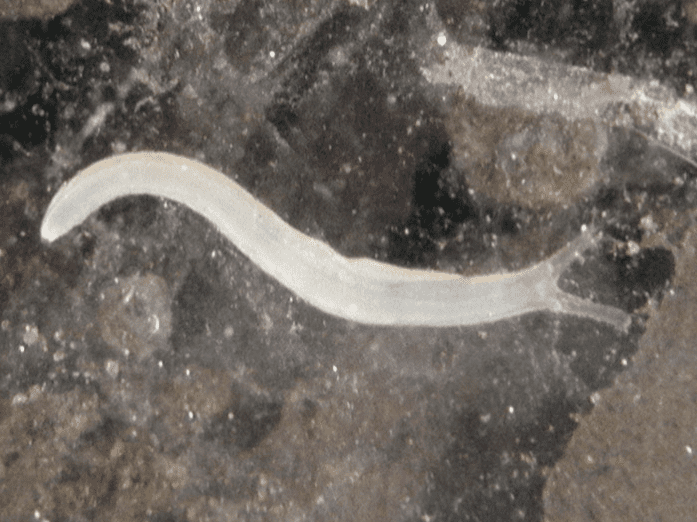
Outside Europe it is also known, presumed as an introduction, from:
Description
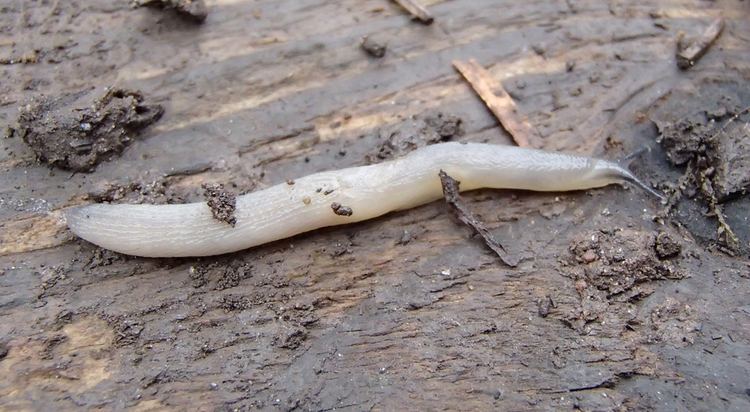
Boettgerilla pallens is very narrow and slender slug, almost worm-like and sharply keeled. The color is pale greyish or with bluish hue. The head and keel is slightly darker. The mantle is pointed at its posterior end and equipped with fine concentrical grooves. Sole is pale yellow. Mucus is colourless. Juveniles are yellowish to dirty white.
The body length is up to 60 mm. The width is up to 3 mm.
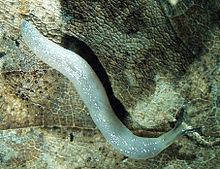
The shell is small, fragile, 1.5-3 x 0.8-1.5 mm, with median nucleus and growth lines, denser in the posterior part, no thin margin, located below the very terminal section of the pointed end of the mantle.
Reproductive system: Penis is elongate and broader than vagina, epiphallus and spermatheca. Epiphallus is swollen and connected to penis laterally near its posterior end, by a long thin duct, which is thinner than vas deferens. Vagina as long as penis and almost as narrow as vas deferens. There are no accessory glands. The spermatheca is elongate and relatively short.
Boettgerilla pallens is much more slender than Milax gagates. The sole is more slender. In Milax gagates the posterior end of the mantle is rounded, its shell is larger and better visible, its colour more yellowish-brownish.
Ecology
Reise et al. (2000) review aspects of the species distribution, mode of range expansion, and other aspects of its ecology.
Boettgerilla pallens inhabits a very wide range of habitats, including gardens, grassland, coniferous and deciduous woodland, and is tolerant of a wide range of soil pH, calcium content and water content. It lives at altitudes of up to 1750 m in the Caucasus and in Switzerland at up to 1600 m, but usually below 700 m. It can be considered as synanthropic, although it is now often found also in undisturbed habitats.
Although it may often been found under logs and stones, it is predominantly subterranean, adapted to moving through earthworm burrows and similar spaces in soil, 2–20 cm (maximum up to 60 cm) below surface. Snails move rapidly away from bright light sources.
Feeding is seldom intensive: slugs usually take a few bites (earthworm faeces, detritus etc., also arionid eggs) and move on. It has been considered as a pest in European greenhouses and gardens, because slugs feed on soft plant tissues.
Mating and egg-laying is during late summer and into autumn in Britain (October in Germany). Eggs are laid as several 1-6 egg clutches 9–27 cm deep below the surface. Adults survive egg-laying but die shortly afterwards. Juveniles hatch after 20–22 days at 17 °C (in Germany), between October and December (in Britain). Juveniles turn colour from white to grey in May–June.
